
Sir Francis Galton was a British polymath and the originator of the behavioral genetics movement during the Victorian era.
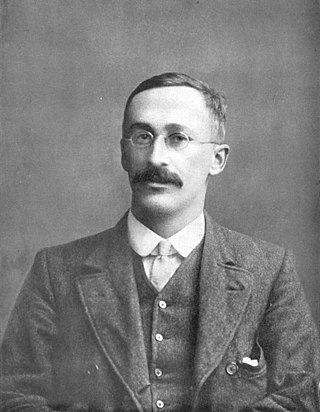
William Sealy Gosset was an English statistician, chemist and brewer who served as Head Brewer of Guinness and Head Experimental Brewer of Guinness and was a pioneer of modern statistics. He pioneered small sample experimental design and analysis with an economic approach to the logic of uncertainty. Gosset published under the pen name Student and developed most famously Student's t-distribution – originally called Student's "z" – and "Student's test of statistical significance".
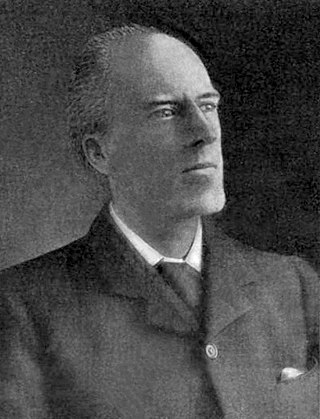
Karl Pearson was an English eugenicist, mathematician, and biostatistician. He has been credited with establishing the discipline of mathematical statistics. He founded the world's first university statistics department at University College London in 1911, and contributed significantly to the field of biometrics and meteorology. Pearson was also a proponent of Social Darwinism and eugenics, and his thought is an example of what is today described as scientific racism. Pearson was a protégé and biographer of Sir Francis Galton. He edited and completed both William Kingdon Clifford's Common Sense of the Exact Sciences (1885) and Isaac Todhunter's History of the Theory of Elasticity, Vol. 1 (1886–1893) and Vol. 2 (1893), following their deaths.

The Annals of Human Genetics is a bimonthly peer-reviewed scientific journal covering human genetics. It was established in 1925 by Karl Pearson as the Annals of Eugenics, with as subtitle, Darwin's epigram "I have no Faith in anything short of actual measurement and the rule of three". The journal obtained its current name in 1954 to reflect changing perceptions on eugenics.

Walter Frank Raphael Weldon FRS, was an English evolutionary biologist and a founder of biometry. He was the joint founding editor of Biometrika, with Francis Galton and Karl Pearson.
Julia Bell MA Dubl (1901) MRCS LRCP (1920) MRCP (1926) FRCP (1938) was one of the pioneers of eugenics and human genetics. Her early career as a statistical assistant to Karl Pearson (1857–1936) marked the beginning of a lifelong professional association with the Galton Laboratory for National Eugenics at University College London. Bell's work as a human geneticist was based on her statistical investigations into the inheritance of anomalies and diseases of the eye, nervous diseases, muscular dystrophies, and digital anomalies.
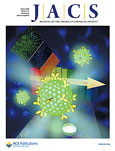
The Journal of the American Chemical Society is a weekly peer-reviewed scientific journal that was established in 1879 by the American Chemical Society. The journal has absorbed two other publications in its history, the Journal of Analytical and Applied Chemistry and the American Chemical Journal. It covers all fields of chemistry. Since 2021, the editor-in-chief is Erick M. Carreira. In 2014, the journal moved to a hybrid open access publishing model.
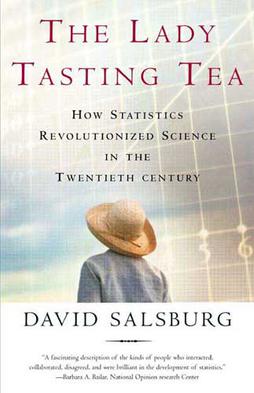
The Lady Tasting Tea: How Statistics Revolutionized Science in the Twentieth Century (ISBN 0-8050-7134-2) is a book by David Salsburg about the history of modern statistics and the role it played in the development of science and industry.
Sir William Palin Elderton KBE PhD (Oslo) (1877–1962) was a British actuary who served as president of the Institute of Actuaries (1932–1934). Elderton also had a very long association with the statistical journal Biometrika. In its early days he published several articles, and in 1935 he became chairman of the Biometrika Trust.
Ethel Mary Elderton (1878–1954) was a British biometrician, statistician and eugenics researcher who worked with Francis Galton and Karl Pearson.
Scientometrics is a monthly peer-reviewed academic journal covering the field of scientometrics. It publishes original studies, short communications, review papers, letters to the editor, and book reviews. It is published by Akadémiai Kiadó and Springer Science+Business Media and was established in 1978. Its founder and first editor-in-chief was Tibor Braun.
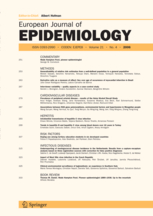
The European Journal of Epidemiology is a monthly peer-reviewed medical journal covering the epidemiology of communicable and non-communicable diseases and their control. It is published by Springer Science+Business Media and the editor-in-chief is Albert Hofman. The journal was established in 1985 with Antiono Sanna as founding editor.
Karl Gustav Jöreskog is a Swedish statistician. Jöreskog is a professor emeritus at Uppsala University, and a co-author of the LISREL statistical program. He is also a member of the Royal Swedish Academy of Sciences. Jöreskog received his bachelor's, master's, and doctoral degrees at Uppsala University. He is also a former student of Herman Wold. He was a statistician at Educational Testing Service (ETS) and a visiting professor at Princeton University.
Acta Paediatrica is a monthly peer-reviewed medical journal covering paediatrics. It is published by Wiley-Blackwell on behalf of the Foundation Acta Paediatrica, based at the Karolinska Institute in Sweden.
The Weldon Memorial Prize, also known as the Weldon Memorial Prize and Medal, is given yearly by the University of Oxford. The prize is to be awarded
without regard to nationality or membership of any University to the person who, in the judgement of the electors, has, in the ten years next preceding the date of the award, published the most noteworthy contribution to the development of mathematical or statistical methods applied to problems in Biology.
Terence Michael Frederick Smith was a British statistician known for his research in survey sampling.

Alice Lee (1858–1939) was a British statistician and mathematician, one of the first women to graduate from London University. She was awarded a PhD in 1901. She worked with Karl Pearson from 1892. She was notable for demonstrating that the correlation between cranial capacity and gender was not a sign of greater intelligence in men compared to women.
David Firth is a British statistician. He is Emeritus Professor in the Department of Statistics at the University of Warwick.
Crop Science is a bimonthly peer-reviewed scientific journal covering agronomy. It was established in 1961 by founding editor-in-chief H.L. Hamilton and is published by ACSESS in partnership with Wiley. It is the official journal of the Crop Science Society of America. Since 2013, it is available online only.









